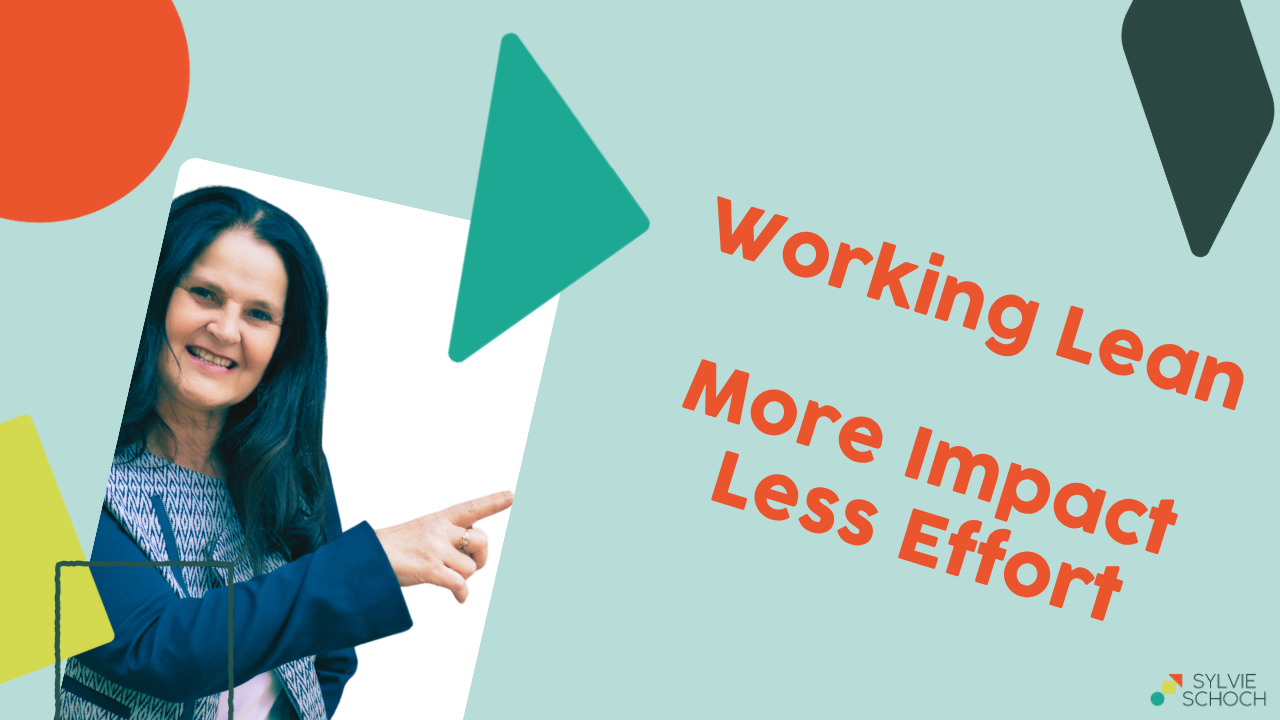
How often do we end the day with the feeling that we haven’t really achieved anything – despite spending hours in front of the computer or in meetings?
Emails pile up, deadlines are getting dangerously close, interruptions never stop.
And what truly matters gets left behind.
The result? Exhaustion – but little satisfaction.
Yes, there is another way to work. It’s called Lean Thinking.
Creating Value – Not Just Working Harder
Lean doesn’t mean working faster or taking on even more tasks in the name of “efficiency.”
It means pausing for a moment to ask: What truly creates value?
- For clients: What makes a real difference for them?
- For colleagues: What makes collaboration easier instead of more complicated?
- For ourselves: What saves time and energy instead of draining them?
When we put these questions at the center, the way we work changes: we scatter less, focus on what matters, and achieve more impact.
A Mindset, Not a Manual
Lean in the office isn’t a rulebook to be followed line by line. It’s about looking at our daily activities from a different perspective:
- Awareness – recognizing which activities really matter.
- Clarity – keeping our goals in sight.
- Respect – for time, skills, and different ways of working.
That makes our daily work lighter, smoother, more productive, and more effective.
All that work and nothing to show for it
That’s a common saying that perfectly fits situations where we’ve put in effort, time, and energy — and achieved nothing of real value.
In Lean Thinking, that’s called waste. The Japanese term Muda refers to all those activities that do not create value – neither for external nor internal clients, nor for the final result.
Here are the eight most common types we encounter in our everyday office work:
- Doing more than necessary (Overproduction) –
→ Creating reports that no one ever reads. - Losing time waiting for materials, approvals, or information (Waiting) –
→ Waiting endlessly for a signature that just won’t come. - Unnecessary movement of documents, data, or people (Transportation) –
→ Sending the same document in several versions by email instead of working on a single shared file. - Accumulation of materials, documents, or unfinished tasks that slow down the workflow (Inventory) –
→ Tasks started but never completed, or files left waiting for review. - Unnecessary movements that waste time and focus without creating value (Motion) –
→ Searching through messy archives or walking back and forth between desks to get information – or moving files from folder to folder without any clear structure. - Doing more than necessary or overcomplicating simple tasks (Over-processing) –
→ Endless coordination meetings about details that could be resolved through one focused conversation. - Mistakes, corrections, or missing information that cause extra work (Defects) –
→ Preparing a presentation based on outdated data and having to redo everything at the last minute. - Unused ideas and skills of employees (Non-utilized talent) –
→ People who could contribute much more but don’t, because their abilities are unknown or unrecognized – or because their ideas go unheard.
Knowing these eight types of waste helps us spot them more easily and take concrete steps to reduce or eliminate them wherever possible in our daily work.
Stress? Yes – But Only the Positive Stress
Work – and life – will never be completely free of stress. And that’s actually a good thing, because positive stress gives us energy:
a bit of adrenaline before a presentation, the curiosity that comes with a new challenge, or the excitement of a competition, to name just a few examples.
The problem arises when stress crosses the healthy limit and turns into negative stress – constant interruptions, ongoing pressure, endless urgencies.
This is where Lean Thinking makes a difference: it reduces unnecessary weight and makes space for the positive energy that helps us work better.
It’s not about being perfect, but about developing habits – step by step – that help us use our energy wisely, avoid wasting it, and focus on what creates value and leads to high-quality results.
Your Worksheet: Lean at Work
To help you get started, I’ve prepared a practical worksheet:
👉 Working Lean – Download the worksheet
It will guide you in identifying where different types of Muda hide in your daily work – and how to free up time and attention for what truly matters.
Want to Learn More?
Would you like to regain clarity and focus in your work?
👉 Get in touch – I’d be happy to talk!
